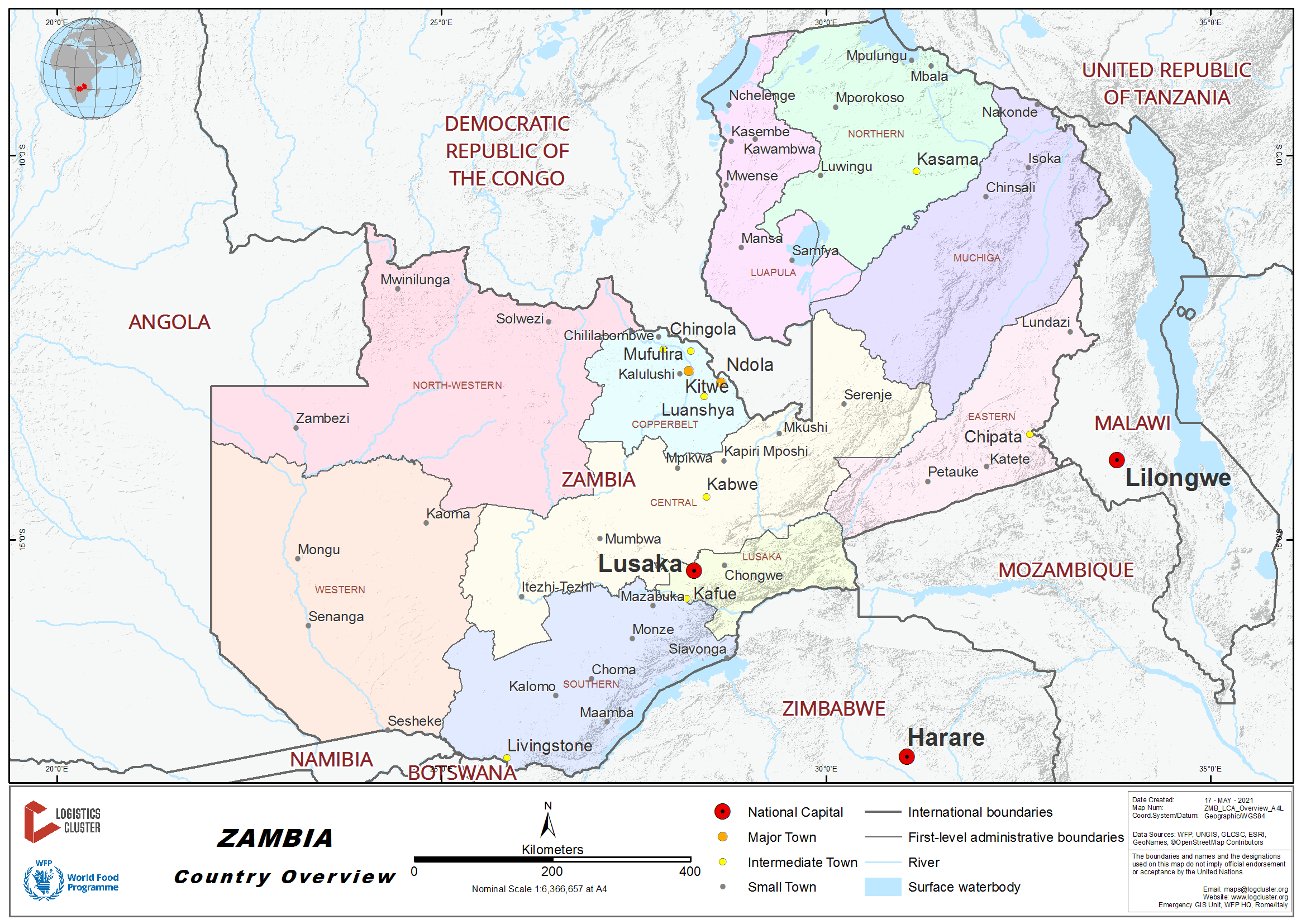
Significant infrastructure development has taken place from the time of the last assessment. A key highlight is the completion of the multi million dollar (USD 260 million) bridge construction at Kazungula border crossing (Zambia – Botswana) expected to be commissioned by the two countries in 2021. Roads, rail, bridges, and airports are all seeing major projects that will replace or improve present facilities. The introduction of Public Private Partnerships (PPP), has made a large impact at border crossings particularly. Most projects are scheduled for completion in the next 5 years, however, other projects are due to start soon with a 5 to 10 year completion schedule. However, Zambia’s external debt to GDP ratio already exceeds 100%. As part of external debt management, the country has since suspended key infrastructural developments such as C400 (Copperbelt roads), L400 (Lusaka Roads) and the over USD 1 billion Lusaka – Ndola dual carriage way road construction.
The road network represents a hub with Lusaka at its center. The main highways in the South-West from Livingstone, through Lusaka to the north-eastern border with Tanzania; from Chipata at the Malawi border in the south east to Lusaka; and from Lusaka to the Copperbelt in the north to DRC. Trucks represent 70 % of cargo movement and the government has launched a policy to ensure that 30% is moved by rail. More infrastructural development is still needed in the rail sector.
Notable investment has been made in rail transport, lines continue to increase and the existing ones are being repaired. The railway line from Dar es Salaam in Tanzania to Lusaka (TAZARA) is operational. The railway from Chipata through Malawi to Nacala in the east is operational but not used frequently as it seasonally affected by rains
There are plans to complete the railway from Chipata to Serenje in Central province to link with TAZARA line. This would open the transport of goods from the port of Nacala (the only deep water port in south east Africa).Rail transport is linked from South Africa through Zimbabwe to Zambia and from Dar es Salaam in Tanzania and the DRC.
Fuel is readily available in Zambia except in the remotest areas where deliveries are less frequent due to road conditions. A fuel pipeline exists from Tanzania to Zambia. There is one oil refinery in Ndola and a lot of fuel storage facilities throughout the country on the main highway network is available. The TAZAMA Pipeline (Tanzania Zambia Mafuta Pipeline) is 1,710 km long crude oil pipeline from the Single Point Mooring Terminal at the outer anchorage in Dar es Salaam, Tanzania to the TIPER refinery in Dar es Salaam and the Indeni refinery in Ndola, Zambia.
Four international airports operated by ZACL are operational and there is a network of smaller national level airports throughout the country. Only the Kenneth Kaunda International Airport is equipped to handle air cargo. Plans to equip air cargo for Simon Mwansa Kapwepwe and Harry Mwaanga Nkumbula International Airports are underway.
Storage facilities, food mills, and food suppliers are mainly found in the Lusaka area, though the Copperbelt Province also includes many of these industries. Food mills tend to have a retail presence in many of the larger towns and cities. The Food Reserve Agency (FRA) has a network of storage facilities across the country for grains and other commodities. Silos for FRA requires attention and are not operating in some regions.
Zambia has access to all the major ports in South Africa, as well as Beira and Nacala in Mozambique, Dar es Salaam in Tanzania, and Walvis Bay in Namibia, either through road or rail transportation. Plans are underway to link the country with port of Lobito in Angola through construction of Northwest Railway line which is also a PPP arrangement.


